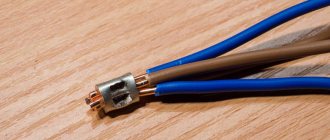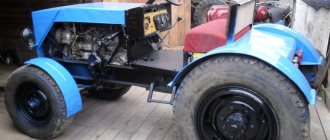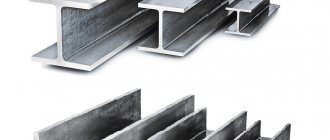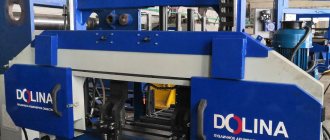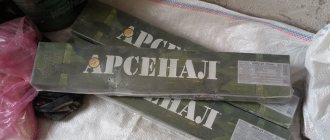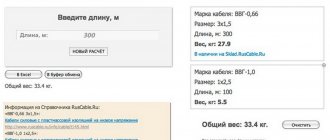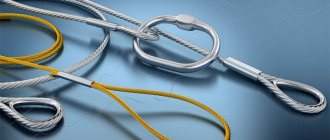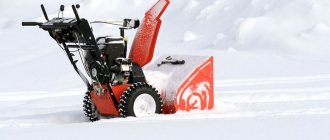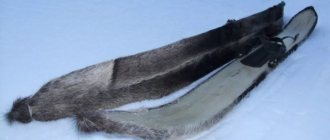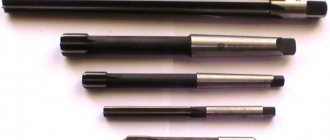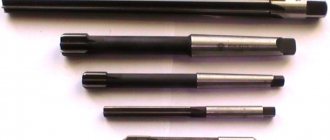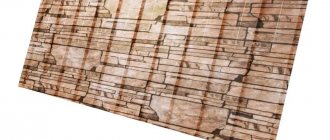To perform work related to manual arc welding of metal parts, you need not only a welding machine, but also additional accessories for it. They ensure correct assembly of the electrical circuit, are responsible for the reliability of contacts and create comfortable and safe conditions for the welder. These primarily include conductive cables, clamps and electrode holders. Such accessories are sold as part of the welder kit or purchased additionally. In any case, a novice master needs to know their purpose, main types and features of application.
Electric holder
The welding machine holder is designed to hold the electrode, supply voltage to it and control its position in the welding zone. It has simple but important requirements:
- reliable fixation of welding rods of various diameters in positions convenient for the welder;
- tight electrical contact;
- simple design ensuring long-term use of the electrode holder;
- ergonomics and safety.
All of the above qualities can be realized in different ways.
Device
Let us briefly consider the design of the electrode holder. Several important factors depend on the design of the device:
- quality of welded joints;
- master's labor productivity;
- convenience and safety of work.
inexpensive electrode holder
A standard type holder is a tool consisting of several parts: body, clamp, handle, moving parts. But different species may have some structural features . More details below.
Types of welding holders
Welding electric holders are classified according to their design and principle of electrode gripping. Almost all of them have a comfortable handle and a mechanical rod lock.
Clothespin holder
This type of holder uses a spring or lever mechanism to clamp the electrode. Their contact surfaces are made in the form of gear parts, allowing the rod to be quickly and firmly fixed in any position convenient for the welder. Most models have a dielectric outer coating, which increases safety for personnel and eliminates unintentional sparking. The main disadvantage of this design is the insufficient grip reliability when the spring weakens and the contacts wear out.
Fork trident
Such an electric holder can no longer be found in specialized stores, but old-school welders continue to use it. The electrode is held here due to the springing action of three steel rods welded together into a single structure vaguely reminiscent of a fork. This device is easily made by hand, but has a number of serious disadvantages:
- the presence of unprotected surfaces under voltage;
- difficulty in extracting the cinder;
- low ease of use.
Collet holder
Holders with a collet principle of electrode clamping have a slightly more complex design, which requires high precision in the manufacture of parts. They have found application in torches used for argon arc welding. They have a narrow scope of use and are quite expensive.
Non-burning holder
This type of holder consists of a handle and a contact pin. Before use, the electrode is welded to its end, which makes it possible to almost completely use the metal of the rod during the welding process. Devices of this design are in demand when working with expensive consumables.
Screw holder
The screw electric holder for welding inverter is highly popular among professionals. It most reliably fixes electrodes of any cross-section due to the threaded method of pressing. Products of this design have virtually no exposed areas, and this has a positive effect on safety. The need to periodically turn the screw slightly increases the time of fixing the rods, which is compensated by the strength of contact and ease of operation.
Overview of species
On the equipment market, manufacturers offer a wide range of electrode holders. Despite this, they use several basic methods of fastening and design.
Main types of electrode holders:
- spring (lever);
- clamping (screw);
- universal;
- specialized.
A standard electrode holder consists of a housing, an insulated handle, a clamp and a movable locking mechanism. The design and operating principle of the holder may differ.
As a rule, holders are divided into multifunctional and models with a narrow specialization. They are produced in strict compliance with GOST. There are different types of devices.
The clothespin is the most common hand holder. It, like a clothespin, fixes the electrode with a spring. Equipped with serrated copper jaws, it securely holds the rod in any position, including at an angle of 180° relative to the handle. Insulating plastic covers cover all metal elements and protect against contact. The clamp makes it possible to quickly change electrodes by pressing the lever. The remains are insignificant, no more than 30 millimeters.
An electrode holder of this design (spring or lever) is the most common and simple product.
The price of the clothespin holder is the lowest in comparison with parts of other designs. The use of this type of holding device allows you to quickly and safely perform welding work, while the quality of the weld will always be at a high level.
The trident fork is the oldest design of a holder, which is made in a handicraft way. It is banned in many states. It has many exposed areas that conduct current, which pose a danger to the life of the user. The welder may suffer radiation damage while working.
The design consists of 3 pins arranged in a triangle. An electrode is inserted between them. The fixation is tight. You can use both alloyed 2 mm electrodes and bare wire with a cross section of 8-10 mm in long pieces when welding large products and welding casting defects.
Powder and carbon electrodes with low ductility cannot be inserted - they crumble.
A professional electric welder can easily use a trident fork. It is not easy for a beginner to work with a holder where the ability to adjust the angle of the electrode is limited and there are exposed conductive parts.
A simple device that makes it easy to fix an electrode of any diameter.
Great care should be taken when using a trident due to the large uninsulated area of the product.
The main advantage of a holder of this design is the possibility of self-production.
The collet holder is highly specialized. It is used in argon welding with a non-consumable rod. The tungsten electrode is inserted into the holder with the non-insulated end and pressed with a nut.
It is used exclusively when welding metal in a protective gas environment.
The device has a long service life and, when used correctly, allows you to perform work of the highest quality. Non-flammable ones provide quick fixation of the electrode. These holders are made in the form of a cylindrical handle, to which a metal pin is attached. The key advantage of this design is waste-free. The electrode is welded to the protruding rod and burns without a residue. A new electrode is then inserted. It is not possible to change the angle of inclination.
This type of device allows you to perform work using almost 100% of the length of the welding electrode. The flameless holder consists of a cylindrical handle (2), into which a metal pin (1) is mounted on one side.
The electrode is fixed by welding its end part to the contact pin.
The holder with a clamping screw is characterized by strong fixation of the electrode. The rod is inserted into a specialized hole and clamped with a screw. The downside is that it takes a lot of time to install and remove the electrode. It is not possible to change the angle of inclination.
As mentioned above, along with the presented samples, there are also highly specialized holders that are designed for the production of specific types of seams and products.
These modifications include holders for several electrodes at once or for functioning under voltage of a 3-phase electric arc. The key difference is the large mass and complex structure, which classifies such modifications as special ones that do not have much application. Each welder personally selects the necessary equipment based on his own needs and working conditions.
Screw-type electrical holders secure consumables well, have good contact and uninterrupted power supply. The contact surfaces have an anti-corrosion coating. With proper use, the device will last for many years.
What is important when choosing a holder
An electric welder holds this device in his hands for a significant part of his working time, so his choice should be approached with maximum responsibility. An experienced master will definitely pay attention to the following points:
- weight, dimensions, ergonomic qualities of the handle;
- compliance of the product labeling with the range of current used in the upcoming work;
- possibility of reliable fixation of electrodes of the required diameter;
- ease of fastening the rod at different angles;
- quality of manufacture of live parts and clamping devices;
- the degree of outer coating of the holder with insulating materials;
- model cost.
Advice! For off-site work, it is advisable to always have a backup power holder.
How not to buy a low-quality holder for a welding machine
Live parts of a quality device must be made of copper and protected with insulating material. Some unscrupulous companies manufacture live parts from steel and then coat them with copper. Thus, the parts become very hot and burn quickly.
They look like copper and it is difficult for a non-professional to visually distinguish them from “all-copper” parts. There is one surefire way that requires a magnet. It is necessary to bring a magnet to the part being tested; if the parts are magnetic, then they are made of steel.
Copper jaws of the holder
Brief overview of popular holder models
Welding holders do not belong to the category of high-tech equipment. For a reasonable price, you can easily find a comfortable and durable model. To make the right choice, it is enough to know several brands from trusted manufacturers.
ESAB Handy 200
This model from the respected Swedish company ESAB is highly popular among professionals and amateurs. It is best suited for using electrodes with a diameter of 2 to 4 mm and is designed for a welding current of 200 amperes. Its weight of only 550 grams will not cause fatigue during the work shift. The screw clamp ensures quick replacement and reliable retention of rods fixed at an angle of 90° and 45°. Complete insulation of live parts guarantees the absence of accidental leaks. You can purchase the product for 500-600 rubles.
Sibrtech 91455
A domestic pincer-type model with a powerful spring costs only 200-250 rubles. It provides quick replacement of electrodes and their fixation in any direction. There are no restrictions on diameter. Current-carrying parts operate reliably at currents of up to 500 A. The product weighs less than 300 g. It has an ergonomic textured handle and a convenient clamp opening lever. The covering is made of durable insulating material.
Cedar Germany type 300A
Another Russian-made model with a pliers clamp, made of brass with a plastic coating. It weighs about 400 grams and is designed for welding current up to 300 amperes. The electrode can be easily installed in one of four possible positions. The handle does not slip in the hand and is not afraid of high temperature exposure. The price of a product of this brand starts from 300 rubles.
We collect high-quality and reliable welding cables that will serve for years
A set of welding cables for manual arc welding includes two cables (wires), one of which has an electrode holder at the end, and the other a terminal for connecting to ground. As a rule, the standard set supplied with an inexpensive welding machine is not of the best quality and breaks down after several months of use. If you buy such a kit separately, then budget models also cannot boast of quality, while quite normal ones are comparable in price to the welding machine itself. Quite often there are models where the emphasis is on one of the three components, i.e. Either the electrode holder is of high quality, but the cable (wires) is so-so, or the wires are excellent, but everything else is not very good. Therefore, in order not to play roulette and not overpay, I suggest self-assembly from proven components. If you are interested, you are welcome...
Content
- Electrode holder:
- Power cables (wires):
- Ground clamp:
- Cable plug:
- Assembly:
- Conclusions:
Electrode holder:
The electrode holder is one of the most important components, and you should absolutely not skimp on it. Comfortable and convenient work, as well as the final result, depend on the quality of its manufacture and design. I will not go into detail, but will only note that there are three common types of electrode holders: fork, spring and screw. The first ones, as a rule, are homemade and are made by welders themselves. They are reliable, not very user-friendly and often not insulated. The second ones are the most common, but in the low and middle price categories their quality leaves much to be desired. High-quality spring electrode holders are easy to use and have no particular complaints. Screw electrode holders securely fix the electrode at the required angle and are of good quality even in the middle price category. Perfect for beginners at first, because... in case of inept removal of a “sticky” electrode, the contact pad of the holder is not damaged.
I didn’t go through trial and error, so I immediately bought a proven screw-type electrode holder ESAB Handy 200:
I bought the ESAB Handy 200 electrode holder here
Chinese proven analogue on Aliexpress
I am an amateur welder, so for my needs and the capabilities of a welding machine, a current of 200A is enough for my eyes. Considering the good workmanship, this electrode holder will last for a long time. If you are a professional and you have to do a lot of welding with thicker electrodes, there are more powerful models in the line, designed for higher current and thicker electrodes. But even this model will allow you to cook with a current of 250A without any problems without damage, the supported electrode diameter is from 2mm to 4mm.
Among the proven manufacturers, the following can be noted: Kord (Russia), ESAB (Sweden), FoxWeld (Italy/China), FUBAG (Germany), ABICOR BINZEL (Germany) and others. Huge selection of holders here and here
ESAB Handy 200 has good quality and low cost, so it is in great demand. Contents of delivery:
The design is as follows:
The central rod is made of brass (an alloy of copper and zinc, with a small addition of tin and other metals), no copper-plated iron or other cheap stuff, which is often used in cheap holders. All this allows significant currents to pass without noticeable heating and damage. For holding, a rubberized handle with a special knurl is used, thanks to which the electrode holder lies confidently in the hand and withstands careless treatment. When compared with inexpensive spring holders, whose handle is made of carbolite or plastic, the difference is obvious. Moreover, the latter become brittle in the cold or from constant heating and can break if dropped from a small height.
The fastener allows you to clamp wires and cables with a cross-section of up to 50mm2:
Power cables (wires):
The second most important elements are power cables (wires). The maximum operating current and reliable ignition of the arc depend on their quality. This is especially true when working with an inexpensive welding inverter, whose current limit barely reaches 120-130A (confident welding with a 3mm electrode). Here it all comes down to Ohm’s law: the higher the resistance, the lower the current, and given the “limit” capabilities of the welder, with bad wires it may no longer “pull out”.
I didn’t hesitate when choosing a cable and took the time-tested KG-HL 1x25 cable:
Buy from trusted stores that sell electrical goods. Can be viewed here
It stands for a flexible cable with copper conductors, with insulation and a rubber sheath without protective covers (armor) in a cold-resistant design (“HL”). At work, I have made and repaired similar welding cables more than once, and I have no complaints about them at all. If you plan to work in the cold, choose the cold-resistant version (“HL”). If I’m not mistaken, then since last year all GOST KG cables have been produced entirely in a cold-resistant design, so when marked KG, the cable will not tan in the cold. This does not apply to “old” stocks marked “KG” and non-GOST versions. The cables according to the specifications are worse, although cheaper. With a declared cross-section of 25mm2, depending on the manufacturer, the actual cross-section varies from 20 to 23mm2. I’ll add on my own that I used these cables to make wires for lighting and modified the wires for the JumpStarter; even at -20°C they don’t stand up.
When choosing, focus on several parameters: current, price, length and weight. The cable cross-section for the welding machine is selected based on the current; give this parameter the highest priority. Be guided by the following values: 16 sq. mm – up to 190A, 25 sq. mm – up to 240A, 35 sq. mm – up to 290A. The higher the cross section, the lower the resistance and the lower the heating losses. Price tags for copper are steep, so the cable is not cheap. Price, length and weight correlate with each other. Remember that carrying a 25m bay of 1x25 cable is still a pleasure, and not a cheap one.
Which section to choose is everyone’s business, but I decided to play it safe and chose 25mm2, since my welder is Chinese and I don’t need any extra losses. In principle, 16mm2 was enough for my purposes, but I took it with a reserve. Moreover, as it turned out, the cable was manufactured according to specifications (not GOST):
Ground clamp:
I made the welding cables in a hurry, so I purchased what was on hand in nearby stores. I didn’t find a normal clamp and temporarily ordered a Diold 3M-300-02 clamp for 300A:
The quality is satisfactory, but the price is attractive (about 150 rubles). Initially I wanted to buy a grounding terminal KZ-25 (KZ-31) “Kord” made of brass for 250A, but they were not available anywhere, even in online stores at reasonable price tags:
Now appeared here
I decided to take a cheap Diold terminal, modify it a little, and after purchasing a normal one, leave it as a spare. It looks like this:
I bought it at the nearest construction store, but you can also order it on Aliexpress here
I can't say anything good about her. Made of steel (plus reliability), the rest is sad: the jaws are copper-plated steel, the extension is small, the tin bridge is short and often does not allow the clamp to engage properly. The pinkish tint on the sponges is a slight coating of copper on the steel for better conductivity of the latter:
The copper layer is small, at 120A it will heat up:
I’ll tell you about the modification of such cheap clamps later, if there is interest, but for the first time it’s enough. My modified one doesn’t get particularly hot at 120A, so I’m in no hurry to change it. Many professional welders use small vices or clamps as work clamps (Kord, PTK, Brima, Sirio and others):
The option is good, but to minimize losses and, accordingly, heating, it is better to use bronze or brass instead of steel.
The Chinese have good clamps at much attractive prices here
there are also ready-made wires with ground here
Cable plug:
Cable plugs (welding connectors), as a rule, come complete with the welding machine. Can be purchased separately if necessary. I just had them in the kit:
Can be purchased separately here
The quality is good, a solid four. I was disappointed by the presence of copper-plated tin strips for screws instead of copper ones:
I cut them out of copper foil in several layers:
Assembly:
When all the elements have been purchased, you can begin assembly. There is nothing complicated about it. First of all, we determine the footage for the cable. The most optimal and common option is a cable with a holder 1-2 meters longer. When purchasing an 8m cable, the optimal option would be “5m + 3m”. At the same time, there will be a cable reserve in height and perimeter when working with a large structure. If you do “4m + 4m”, then sometimes you will have to move the welding machine.
After we have decided on the dimensions, we strip the ends of the wires. We measure the depth with a caliper or some kind of knitting needle and strip the insulation to this distance:
You can use so-called insulation strippers, a very convenient tool for installers and more. You can buy it here
When clamping the cable in the electrode holder, do not forget about the special spacer for the screw, otherwise the latter will break some of the wiring and the contact will be worse:
This is a wonderful design:
We do the same with the cable plug:
Don't forget to also install the gasket under the screw:
As a result, we have high-quality universal cables that have minimal resistance and do not heat up even at significant currents:
When using KGHL cable, they can work perfectly in the cold.
Conclusions:
I really liked the ESAB Handy 200 screw electrode holder: it doesn’t get hot, it fits comfortably in the hand, it has two angles for installing the electrode. Rearranging the electrode takes about 10 seconds and does not cause any inconvenience. It will be especially useful for beginners, because... In case of inept removal of a stuck electrode, the holder itself will not be damaged. In terms of cost, such a self-assembled kit is somewhat cheaper, and in terms of quality it is head and shoulders above most factory ones. At the same time, it will easily survive even several welding machines and will not break, so it is recommended for repetition...
If the topic is interesting, I will make a brief review of proven and reliable equipment, accessories and welding equipment, which some people are not even aware of.
Making your own electrode holder
The easiest way to make a trident-shaped holder with your own hands from available materials . For this, steel wire of round or variable cross-section with a diameter of about 8 mm is used. Three pieces about 20-25 cm long are cut from it. Two of them are slightly bent and welded together with their lower ends so that the pieces are located in the same plane, and their upper ends form the outer teeth of the fork.
The third piece is made a little shorter than the rest. It is also given a slight bend, orienting it in a plane perpendicular to the first two blanks.
Welding is carried out in such a way that the bare end of the electrodes most often used in the work elastically fits into the gap formed with some force.
For a reliable and tight connection of the welding cable with the resulting structure, its end is exposed by 6-8 centimeters and tightly wrapped with small-diameter steel wire. The resulting tip is welded to the long lower ends of the outer rods of the holder. The handle is made from a piece of rubber hose, an elastic plastic tube or a dielectric sheath of a wire of the required diameter, pulling it from the back. The manufacturing process is clearly demonstrated in the following video.
Ground clamp
For proper operation of the electrical circuit, the parts being welded must be securely connected to ground. Only in this case will a high-quality seam be obtained, and the welder will be protected from electric shock. In this case, the contact function is intended to be performed by clamping the mass. Standard accessories do not always correspond to the assigned tasks, so experienced craftsmen try to select the equipment themselves. The most important characteristics of electrical clamps are:
- maximum current flow;
- sufficient contact density;
- ability to support the weight of the cable;
- terminal opening angle.
Main types of clamps
The clamping arrangement may be different. In difficult situations they behave differently. This should inevitably be taken into account when purchasing.
Crocodile
This type of welding clamp has a powerful spring and teeth for easy engagement. They are installed and removed with one movement of the hand.
Their advantages include:
- ease of use;
- easy adaptation to parts of any shape;
- high degree of opening.
They also have disadvantages:
- gradual weakening of the spring;
- not always reliable contact.
Magnetic clamp
This design requires the presence of a strong permanent magnet and a terminal for connecting the cable.
This offers compelling advantages:
- simplicity and durability;
- possibility of attachment to parts of any shape and size;
- use in hard-to-reach places;
- no moving parts;
- large contact area.
But we must not forget about the disadvantages:
- low reliability of fastening to parts with a small contact surface;
- sensitivity to pollution;
- demagnetization at high temperatures;
- impossibility of application on stainless steel, cast iron and non-ferrous metals.
Clamp
Fastening the ground cable using a screw mechanism is not so widespread and is most often used in special conditions.
Its advantages:
- exceptionally high connection reliability;
- wide contact area.
Flaws:
- significant dimensions of the product;
- labor-intensive fastening.
Welding cable
Voltage is supplied to the welding site and connection to the ground of the parts being connected is carried out using welding cables. They in most cases have a single conductor of round cross-section and are usually terminated with standard terminals. They are subject to increased requirements:
- mechanical strength and resistance to chemically active substances;
- possibility of repeated twisting and straightening;
- high flexibility;
- immunity to dirt and moisture.
The most widely used flexible cable is the KG brand. It is designed to operate with direct current up to 1 kV or with alternating current voltage up to 660 V and frequency up to 400 Hz. It has a number of varieties:
- KG-HL, resistant to frost down to -60°C;
- KG-T, designed for tropical climates;
- KGN equipped with non-combustible insulation;
- KG-KOG, which is particularly flexible.
Cable KG 1x25
The KOG brand cable is suitable for arc welding, semi-automatic or automatic welding with direct current up to 700 V or with alternating current voltage up to 220 V and frequency up to 50 Hz. Its varieties are also focused on different environmental temperatures.
Cable KOG 1 1x16
In addition to single-core cables, the following are widespread:
- two-core wires for pulse welding and cutting;
- three-core cables used in various types of automatic welding.
The maximum parameters of the current passing through the cable are directly related to the material used and the cross-sectional area. When choosing the required section, you should use special tables. For a household inverter operating from a 220-volt network, a single-core copper wire of 6.7 mm2 is suitable, and for powerful automatic units, 35.6 or 47.2 sq.mm are more often used.
How to improve the ground terminal?
This problem is usually encountered by novice welders. Purchase a budget manual arc welding inverter for welding at home: for a fence, gate, canopy, etc. Such an inverter, costing 6-10 thousand rubles and more, is equipped with a “Crocodile” clothespin. In addition to other negative aspects of such a clothespin, which were already mentioned above, it most likely has steel jaws coated with a thin layer of galvanic copper (to give the impression that they are copper). It’s very easy to check whether it’s copper or steel; you just need to hold a magnet. If it is magnetic, it means it is steel. Usually, food-grade stainless steel in an unhardened state is not yet magnetic, but that’s a completely different story (read the article “How to determine what kind of metal”).
What are the dangers of steel jaws? They will get hot - steel is a much worse conductor than copper or brass. To prevent this from happening, you can remake a cheap clothespin that costs 40-50 rubles. (if, of course, you have some copper or brass in your household, for example, a plate or tube, a busbar).
What should be done? You need to unscrew the original jaws, which are held on by bolts, and use them, like a template, to make other jaws. It is enough that in cross-section they represent the Russian letter “P”. Without much effort you will get a good contact on a low-quality clothespin!
Connecting cables
When connecting a cable to welding equipment, special tips are usually used to ensure reliable contact and protection from accidental contact. The wire must comply with the operating parameters of the welding machine. Particular attention is paid to maintaining polarity. When connecting two wires, it is necessary to use crimping followed by insulation.
In most cases, the standard cables sold with the inverter are, for a number of reasons, shorter than the technician would like. Although welding equipment manufacturers usually do not impose restrictions on their length, the welding lead extension must be used with extreme care. It is important to make sure that the added section does not lead to a critical decrease in voltage and welding current.
